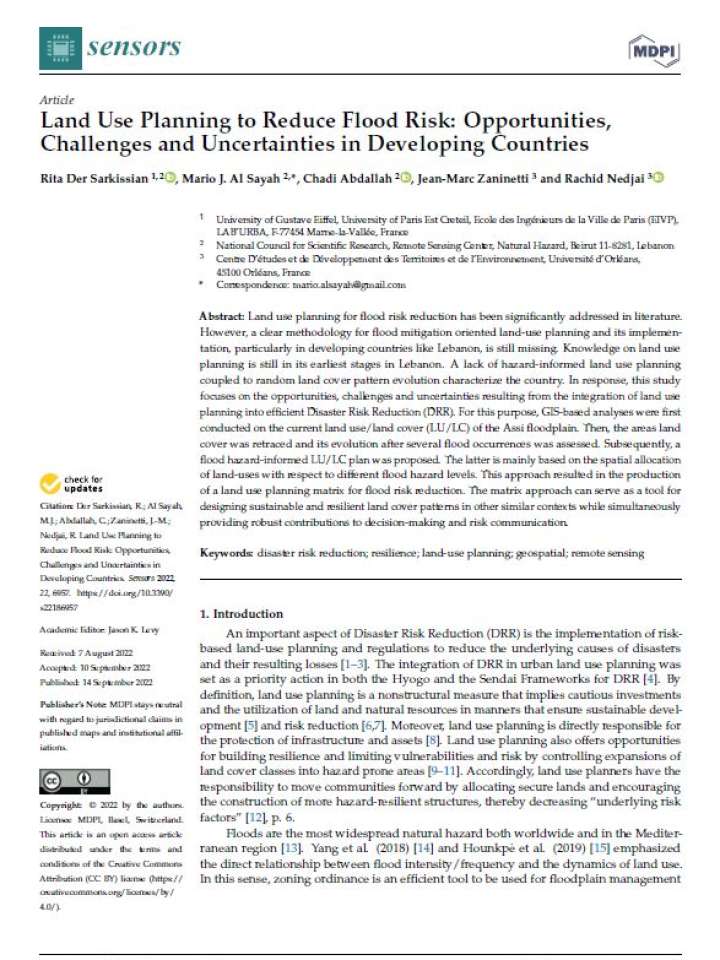Land use planning to reduce flood risk: opportunities, challenges and uncertainties in developing countries
This study focuses on the opportunities, challenges and uncertainties resulting from the integration of land use planning into efficient Disaster Risk Reduction (DRR). For this purpose, GIS-based analyses were first conducted on the current land use/land cover (LU/LC) of the Assi floodplain in Lebanon. Land use planning for flood risk reduction has been significantly addressed in the literature. However, a clear methodology for flood mitigation-oriented land-use planning and its implementation, particularly in developing countries like Lebanon, is still missing. Knowledge on land use planning is still in its earliest stages in Lebanon.
A lack of hazard-informed land use planning coupled to random land cover pattern evolution characterize the country. Then, the areas land cover was retraced and its evolution after several flood occurrences was assessed. Subsequently, a flood hazard-informed LU/LC plan was proposed. The latter is mainly based on the spatial allocation of land-uses with respect to different flood hazard levels. This approach resulted in the production of a land use planning matrix for flood risk reduction. The matrix approach can serve as a tool for designing sustainable and resilient land cover patterns in other similar contexts while simultaneously providing robust contributions to decision-making and risk communication.
Explore further
